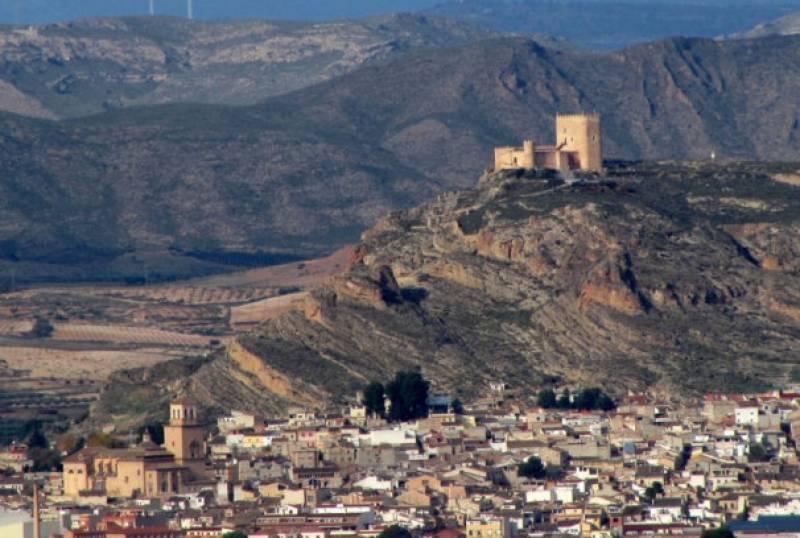- Region
- Águilas
- Alhama de Murcia
- Jumilla
- Lorca
- Los Alcázares
- Mazarrón
- San Javier
-
ALL AREAS & TOWNS
- AREAS
- SOUTH WEST
- MAR MENOR
- MURCIA CITY & CENTRAL
- NORTH & NORTH WEST
- TOWNS
- Abanilla
- Abarán
- Aguilas
- Alamillo
- Alcantarilla
- Aledo
- Alhama de Murcia
- Archena
- Balsicas
- Blanca
- Bolnuevo
- Bullas
- Cañadas del Romero
- Cabo de Palos
- Calasparra
- Camping Bolnuevo
- Campo De Ricote
- Camposol
- Canada De La Lena
- Caravaca de la Cruz
- Cartagena
- Cehegin
- Ceuti
- Cieza
- Condado de Alhama
- Corvera
- Costa Cálida
- Cuevas De Almanzora
- Cuevas de Reyllo
- El Carmoli
- El Mojon
- El Molino (Puerto Lumbreras)
- El Pareton / Cantareros
- El Raso
- El Valle Golf Resort
- Fortuna
- Fuente Alamo
- Hacienda del Alamo Golf Resort
- Hacienda Riquelme Golf Resort
- Isla Plana
- Islas Menores & Mar de Cristal
- Jumilla
- La Azohia
- La Charca
- La Manga Club
- La Manga del Mar Menor
- La Pinilla
- La Puebla
- La Torre
- La Torre Golf Resort
- La Unión
- Las Palas
- Las Ramblas
- Las Ramblas Golf
- Las Torres de Cotillas
- Leiva
- Librilla
- Lo Pagan
- Lo Santiago
- Lorca
- Lorquí
- Los Alcázares
- Los Balcones
- Los Belones
- Los Canovas
- Los Nietos
- Los Perez (Tallante)
- Los Urrutias
- Los Ventorrillos
- Mar De Cristal
- Mar Menor
- Mar Menor Golf Resort
- Mazarrón
- Mazarrón Country Club
- Molina de Segura
- Moratalla
- Mula
- Murcia City
- Murcia Property
- Pareton
- Peraleja Golf Resort
- Perin
- Pilar de la Horadada
- Pinar de Campoverde
- Pinoso
- Playa Honda
- Playa Honda / Playa Paraíso
- Pliego
- Portmán
- Pozo Estrecho
- Puerto de Mazarrón
- Puerto Lumbreras
- Puntas De Calnegre
- Region of Murcia
- Ricote
- Roda
- Roldan
- Roldan and Lo Ferro
- San Javier
- San Pedro del Pinatar
- Santiago de la Ribera
- Sierra Espuña
- Sucina
- Tallante
- Terrazas de la Torre Golf Resort
- Torre Pacheco
- Totana
- What's On Weekly Bulletin
- Yecla


- EDITIONS:
 Spanish News Today
Spanish News Today
 Alicante Today
Alicante Today
 Andalucia Today
Andalucia Today
December 6 Guided tour of Jumilla castle
Visit this magnificent fortress in northern Murcia and enjoy the sights and tastes of Jumilla!

On the public holiday of December 6 all are welcome to join this guided tour to visit the castle in Jumilla. The tour is in Spanish and starts at 11.00 at the entrance gate to the castle and the visit costs just 2.50 euros per person, payable at the beginning of the tour to the tour guide.
Bookings can be made online here or by contacting the Jumilla Tourist Office (telephone +34 968 780237, WhatsApp +34 663 300779 or email oficinaturismo@jumilla.org). In any case, participants should drop in at the tourist office at least 15 minutes before the visit starts in order to receive authorization for their car to be allowed up the castle hill.
Read also: How to book and navigate the Ruta del Vino wine route in Jumilla
Jumilla castle
 Despite having undergone extensive renovation in recent years the castle of Jumilla is, in many ways, everything one might expect of a medieval fortress: it stands in a position of dominance high on a hilltop above the town, it commands panoramic views over the surrounding area, it has an imposing keep four floors high with crenelated battlements and it generally gives the impression of being close to impregnable.
Despite having undergone extensive renovation in recent years the castle of Jumilla is, in many ways, everything one might expect of a medieval fortress: it stands in a position of dominance high on a hilltop above the town, it commands panoramic views over the surrounding area, it has an imposing keep four floors high with crenelated battlements and it generally gives the impression of being close to impregnable.
These attributes were doubtless in the mind of Juan Pacheco, the first Marquis of Villena, when he ordered the castle to be built in 1461 to defend the town and the surrounding countryside. However, at least in choosing the location, the Marquis had his task made easier by the fact that previous fortresses had stood in the same spot for many centuries.
During the Wars of the Spanish Succession it was at the castle of Jumilla that Cardinal Belluga gathered his troops to fight for the cause of the House of Borbon in the Battle of Almansa (1707), and when Felipe de Borbón eventually triumphed it was this loyalty to his cause which led to Jumilla receiving royal favour over the following years.
During the War of Independence the castle was used as a barracks by the French troops, who adapted it somewhat, and in the first half of the 19th century it became a prison. Following this, though, its condition declined and eventually the castle was abandoned.
However, in 1971 work began to restore the building, and the latest episode of restoration and refurbishment was completed in 2000.
Inside the castle
Originally, the lower of the floors in the keep contained the dungeons and the storage areas for food and water. Alongside is the inner ward and a wooden chemin de ronde.
The keep itself is irregularly shaped: there are no windows on the eastern side, which is rounded in order to minimize the effect of cannonball attacks, and inside there was a weapons store on the first floor, the noble living quarters on the second floor (including a large hearth and fireplace) and mechanisms for operating the drawbridge on the third floor.
Among the stops on a tour of the castle are the Moorish cisterns, which could store up to 96,500 litres of water and included side windows through which water could be taken out by means of pulleys, and the Torre de Maestre, the smaller, secondary tower on which the coat of arms of Diego López Pacheco are emblazoned.
Access to the castle is by the “Camino del Subidor”, a restored path which was originally built by the Moors to provide access to the western side of the fortress.
When visiting Jumilla don’t forget to make your first port of call the local tourist office (Plaza del Rollo, 1, telephone 968 780237 / 663 300779, email oficinaturismo@jumilla.org.
For more local events, news and visiting information go to the home page of Jumilla Today.
Oficina de Turismo Jumilla
The tourist office in the centre of Jumilla is easily found by driving straight into the centre of the town along the Avenida de Murcia and following the signposts. The tourist office is alongside the Parque de Don Albano Martínez Molina, where there are a number of parking spaces.
Jumilla, in the north of the Region of Murcia, has become internationally famous over recent decades due to the quality of the wines produced in the municipality, and wine tourism has begun to attract visitors from other parts of Spain and the rest of Europe.
The tourist office is happy to provide a range of maps and leaflets showing the different bodegas which can be visited within the municipality. Some of these form part of the Rutas del Vino de Jumilla, the Jumilla wine route, and can either be visited as a guided tour or sell their produce directly to the public.(see feed below for more details)
However, the town and the surrounding countryside have plenty of other attractions for visitors, and the popularity of Jumilla wines is leading more and more people to discover other facets of the tenth largest municipality in Spain.

These include the spectacular countryside and birdlife in the Sierra del Carche, the historic remains which range from cave paintings and a Roman mausoleum to the castle, the Iglesia de Santiago, the Town Hall and the Teatro Vico, and the gastronomy: rich stews are accompanied not only by the wines of the area but also by Jumilla pears, which also enjoy Denomination of Origin status.
Tourism in Jumilla is not as seasonal as it is in the coastal areas of the Region of Murcia, but the town is at its liveliest during the fiestas in Holy Week and the August Fair, which incorporates the grape harvest celebrations and the Moors and Christians parades.
The Altiplano of the Region of Murcia, which consists of the municipalities of Jumilla and Yecla, is only just over an hour by car from the Mar Menor, Cartagena, Mazarrón, Torrevieja and Alicante, and anyone wishing to visit real inland Spain and world-class wineries is advised to include Jumilla in their schedule.
Opening hours
Summer
Tuesday to Friday from 10am to 2pm
Saturday and Sunday 10am to 2pm
Monday closed
Winter
Tuesday to Friday from 10am to 2pm and 5pm to 7pm
Saturday and Sunday 10am to 2pm
Monday closed
Click for full information about visiting the Jumilla municipality and its wine bodegas: Jumilla section




























